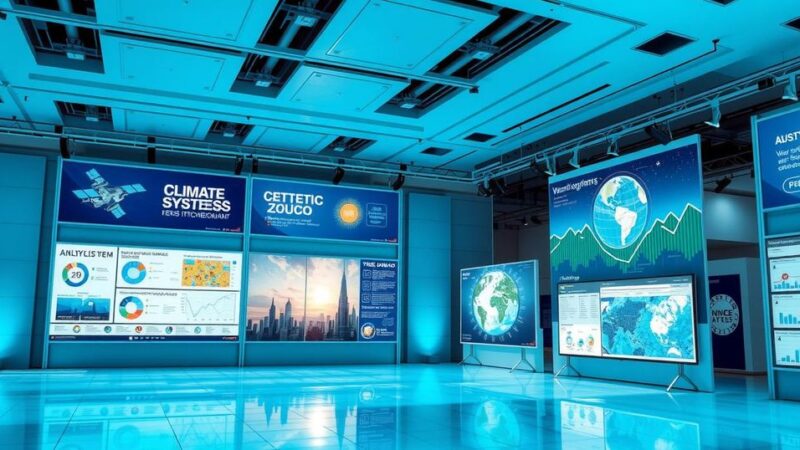The report by WaterAid reveals that many cities are facing “climate whiplash,” characterized by extreme shifts between wet and dry weather patterns. It highlights that 95% of the world’s 100 most populous cities are experiencing detrimental effects such as floods and droughts, which threaten water supplies and public health. The study emphasizes the challenges posed by rapid climate changes, exemplified by cities like Nairobi and Los Angeles.
“Climate whiplash” is affecting cities worldwide as major urban areas experience drastic shifts between wet and dry extremes. This phenomenon is documented in a report by NGO WaterAid, which examined climate changes over the past 40 years among the 100 most populous cities and 12 selected ones. A striking 95 percent of these cities showed trends toward either wetter or drier conditions, resulting in intensified floods, droughts, and critical threats to clean water, sanitation, food supply, public health, and community stability.
Globally, over 4.4 billion people reside in cities, with increasing populations straining water supply and sanitation systems. Concurrently, a changing climate renders both existing and new infrastructure inadequate for handling extreme weather events. “Our study shows that climate change is dramatically different around the world,” stated Professor Katerina Michaelides from the University of Bristol. She noted that while regions like Europe and the Arabian Peninsula face increased aridity, cities in South and Southeast Asia are experiencing severe rainfall and flooding.
More than 20 percent of the cities analyzed are undergoing a reversal in climate extremes, becoming either significantly wetter or drier. Warmer air exacerbates these extremes by absorbing more moisture during dry spells and releasing it in extreme downpours. Cities such as Cairo, Madrid, and Riyadh are among those experiencing the most pronounced shifts.
Both prolonged droughts and floods pose significant risks to urban areas, leading to water shortages, disrupted food supplies, and devastating impacts on infrastructure. For instance, Brazil’s recent drought highlighted the dangers of water scarcity, while flooding compromises drinking supplies, damages crops, and leads to livestock fatalities. Reports from Nairobi, Kenya reveal that cities suffering from climate whiplash endure the worst of these two extremes. After years of drought, heavy rains have caused flash flooding, resulting in fatalities and economic disruption.
Los Angeles exemplified this whiplash event through its January wildfires, which were fueled by vegetation growth during wet periods followed by severe dryness. These wildfires tragically resulted in at least 29 deaths and substantial property destruction. Nairobi and Los Angeles are part of the 15 percent of surveyed cities impacted by climate whiplash, which includes Baghdad, Bangkok, Melbourne, Jakarta, and Hangzhou. Rapid weather shifts hinder recovery efforts and exacerbate living conditions for urban residents.
The findings of the WaterAid report underline the critical impacts of climate whiplash, highlighting that urban centers across the globe are grappling with severe shifts in weather patterns. This phenomenon threatens essential resources and infrastructure, amplifying health and safety risks. Urgent actions are needed to improve resilience in these cities to mitigate the adverse effects of climate variability on their populations.
Original Source: macaonews.org






